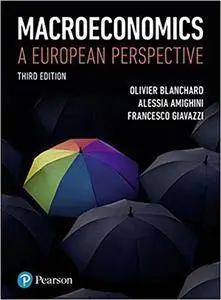Macroeconomics: A European Perspective, Third Edition
Pearson | English | 2017 | ISBN-10: 1292085673 | 593 pages | PDF | 13.47 MB
Pearson | English | 2017 | ISBN-10: 1292085673 | 593 pages | PDF | 13.47 MB
by Olivier Blanchard (Author), Alessia Amighini (Author), Francesco Giavazzi (Author)
A Unified View of the Latest Macroeconomic Events
In Macroeconomics, European Edition Blanchard, Giavazzi and Amighini present a unified, global and European view of macroeconomics, enabling students to see the connections between goods markets, financial markets, and labour markets worldwide.
Organized into two parts, the text contains a core section that focuses on short-, medium-, and long-run markets and three major extensions that offer more in-depth coverage of the issues at hand. From the major economic crisis and monetary policy in Europe and globally to growth in China, the text helps students make sense not only of current macroeconomic events but also of events that may unfold in the future.
Integrated, detailed boxes in the Third European Edition have been updated to convey the life of macroeconomics today; reinforce lessons from the models; and help students employ and develop their analytical and evaluative skills.
This book gives students a thorough understanding of macroeconomics by taking a unified view of the subject, allowing connections to be made between the short, medium and long run.
Re-written almost from scratch in light of the experience of the Great Recession, this text is essential reading for anyone studying macroeconomics in the aftermath of the financial crisis.
Features
The book has been re-written almost from scratch after a thorough re-think of how macroeconomics should be taught after the financial crisis. Among the new features:
· The text recognizes that modern central banks set interest rates, not the quantity of money: this gets rid of the LM curve greatly simplifying the discussion of financial markets
· Ii presents the Medium Run starting directly from the Phillips curve, thus avoiding the intermediate AS-AD step which was clunky, and, for good reasons, undergraduates find it difficult to understand. Output above potential, or unemployment below the natural rate put upward pressure on inflation. The nature of the pressure depends on the formation of expectations, an issue central to current developments
· The yield curve now incorporates a risk premium, whose fluctuations have been central to the crisis, especially since Quantitative Easing policies have shown that monetary policy can affect this premium



